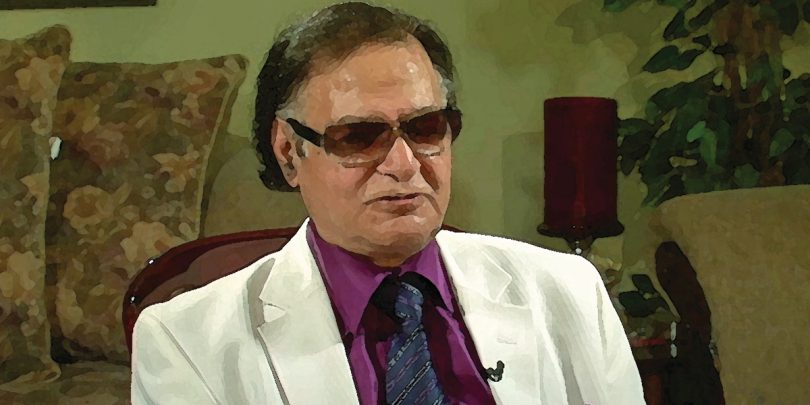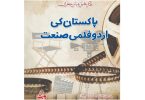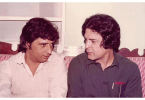Synopsis
What you should know about the maestro behind Akele Na Jana, Jeevay Pakistan, and Aaj Janay Ki Zid Na Karo on his 84th birthday
Although his absence from the music scene could be noticed from the 1990s, but his film songs, patriotic numbers and rhymes for children have always been entertaining for every generation and are still on the playlist of many
Every age has witnessed the arrival of music composers who arrive on the scene, change the way things are being done, and leave the stage for their successors. However, nearly sixty years ago the arrival of the maestro Sohail Rana, was so impactful that no one has been able to match his legacy. Although his absence from the music scene could be noticed from the 1990s, but his film songs, patriotic numbers and rhymes for children have always been entertaining for every generation and are still on the playlist of many.
Born on 31st March 1938 in the Indian city of Agra to renowned Urdu poet Rana Akbarabadi, the young Sohail Rana migrated to Pakistan soon after Partition and studied at the Sindh Madressatul Islam (matriculation) and D.J. Science College, before graduating from the National College. Even before he went ahead to attend Karachi University, Rana showed his interest in music; while at the D.J. Science, he composed the college’s anthem when other students were busy in studying for their courses.
After entering films in 1963 through Jab Se Dekha Hai Tumhain, there was no looking back for the young man who first ruled the film music scene, before turning to TV with his patriotic numbers and finally composing evergreen children’s songs, which to this day help kids in memorising the names of the months in the Hijri Calendar and the golden words of Quaid-e-Azam Mohammad Ali Jinnah, to name a few. Let’s take a look at the way Sohail Rana planned his journey, and how his career evolved from a newbie in the film industry to the man who made the people of Pakistan feel honoured about their country and also boosted their morale and love towards their motherland with his songs.
The first phase – Giving films the ‘filmi’ touch
When Sohail Rana entered the films, not only the film industry but the country itself was discovering. He knew Waheed Murad through social interactions – cricket being one of them – and when the future chocolate hero decided to enter films as a producer, he offered Rana his very first composing assignment – Jab Se Dekha Hai Tumhain (1963) – which became a hit due to melodious soundtrack.
Although Himayat Ali Shayar wrote most of the film’s songs, it was Masroor Anwar, who wrote just one song, became friends with the young composer and together they became a team that went on to deliver hit numbers – both in films and beyond. Add the director of their next flick Pervez Malik and the team was complete with Waheed Murad as producer, Sohail Rana as a composer, Masroor Anwar as lyricist, and Pervez Malik behind the camera. Their first collaboration Heera Aur Pathar (1964) has a special place in Pakistan’s film industry as it introduced Waheed Murad as a leading man, and together they continued to churn hits till the mid-70s.
It was this squad that gave Pakistan the many firsts in Armaan (1966) – it was Pakistan’s first platinum jubilee film that ran for 75 weeks which also had the first-ever proper pop song Ko Ko Korina and Akele Na Jana. It helped Waheed Murad become the first heartthrob to rule the hearts of his female fans, long before any other actor had the same effect on either side of the Wagah.
Sohail Rana (along with Pervez Malik) then turned one-time film producer with Doraha (1967) which is known for its melodious numbers Mujhe Tum Nazar Se and Bhooli Hui Hoon Dastaan, that was followed by a return to Film Arts with Ehsaan (1968) and Ishara (1969), the latter marking Waheed Murad’s (only) attempt behind the camera. It was Rana who encouraged Waheed Murad and Deeba to sing Jaise Taise Beet Gaya Din instead of using his frequent collaborators Ahmed Rushdi and Mala, since he wanted the song to come out as a natural, instead of a regular romantic duet.
The soon to be a legendary composer wasn’t restricted to just the Waheed Murad-Pervez Malik-Masroor Anwar camp, he even composed songs for Dil Deewana, Shehnai, Mere Humsafar, Saughaat, Bees Din, Baazi, Dil De Ke Dekho, Badal Aur Bijli, Qasam Uss Waqt Ki besides Pakistan’s first-ever English film Beyond the Last Mountain that was also released as Musafir. Although his last film Hisaab was released in 1986, Sohail Rana considers Badal Aur Bijli (1974) his final film as a music composer, the film that featured Aaj Janay Ki Zid and Yoon Nazren Na Pheriye. After composing songs for two dozen films in ten years, he decided to stay back in Karachi when the whole film industry was moving to Lahore, and it proved to be one of the best decisions of his life.
The second phase – Going Patriotic with a capital P
In the late 60s, Pakistan saw the rise of TV as an alternate medium to films, and Sohail Rana decided to explore the untapped and undiscovered horizon that would go on to make him the most loved music composer in the country. Besides introducing singers like Mehnaz, Ifrahim, Afshan Ahmed, and others to the listeners across the world, he got fellow composer and poet Mehdi Zaheer to sing Hum Mustafavee Hain when Pakistan hosted the second Islamic Summit Conference in 1974.
It was his composition that immortalized Jamiluddin Aali’s Jeevay Pakistan and Masroor Anwar’s Sohni Dharti sung by Shehnaz Begum, besides many other patriotic songs like Muhammad Ali Shyhaki’s Main Bhi Pakistan Hoon, Amjad Hussain’s Tera Pakistan Hai, Muhammad Ifrahim’s Zameen Ki Goad, and his own Yeh Des Hamara Hai.
Most of the songs aired on TV and Radio these days during national days like 23rd March, 14th August, and even 25th December are compositions that came from the mind of Sohail Rana. Had he stayed with films, he might have become one of the best film composers in Pakistan, but going the patriotic way proved to be a masterstroke for him, and those who were fortunate enough to grow up in those days.
The Third Phase – Educating the younger generation
When Pakistan Television began its transmission in the 1960s, renowned music composer Moslehuddin and his wife singer Naheed Niazi used to host a TV show where they taught kids nursery rhymes and the basics of singing. However, when the couple decided to migrate to the United Kingdom, many others tried to replace them but no one was able to be as successful as Sohail Rana. For two decades, he kept educating the younger generation with his songs, and even today when people who grew up in the 1970s and the 1980s are asked the names of months in an Islamic calendar, they instantly quote Sohail Rana’s song Bara Mahinay Islami Hijri Ke Yaad Rakhen.
The journey that began with Kaliyon Ki Mala in 1968 continued till 1989 under different titles – Saat Suron Ki Duniya, Sang Sang Chaltay Rehna, Hum Hi Hum, Rang Barangi Dunya, Saray Dost Hamare, Sang Sang Chalein, etc. where Sohail Rana taught multiple generations that went onto rule the airwaves themselves. Be it the legendary Nazia Hasan and Zoheb Hasan or the sweet-voiced Afshaan Ahmed and Fatima Jaffery, folk singer Amjad Hussain, or legendary pop singer Hadiqa Kiyani and music composer Adnan Sami Khan, they all appeared in Sohail Rana’s show before making a name for themselves as music entities.
It was Afshan Ahmed who sang Dosti Aisa Nata for the first time and the song still remains popular after five decades; Anwar Ibrahim’s Teri Waadi Waadi Ghoomon is as popular as Jeevay Pakistan today, while there hasn’t been an Iqbal Day without Iqbal Hamara in a long time. It was these children who sang the popular numbers Chacha Ne Guriya Bheji, Daak Babu, Shawa Bhai Shawa, and Yeh Des Hamara Hai that have stood the test of times because of Sohail Rana’s futuristic approach.
The Fourth Phase – Going out with a bang!
Despite being the most popular Pakistani film composer who had worked in films, on TV and composed songs for children, Sohail Rana felt that if he had to make a name for himself, he had to do something for his motherland, besides composing patriotic songs. That’s why he collaborated with EMI in the early 1970s to come up with instrumentals such as Khyber Mail that captured the beauty of Pakistan, musically. He also had the distinction of working with the London Symphony Orchestra and at the Sydney Opera House, which is no small feat for any Pakistani music composer.
Since he was the resident composer for PIA (Pakistan International Airlines) in the early 1970s, he had the honor of composing the inflight music for the national airlines. But nothing could have matched his happiness when he was presented with the Peace Messenger Award by the then United Nations Secretary-General at the UN head office. That award, besides the gold discs from EMI and the Presidential Pride of Performance Award he was bestowed in 1981 and the Sitara-e-Imtiaz in 2012 remains his prized possession.
His final bow came in 1989 when he composed the anthem for the South Asian Federation (SAF) Games, Asia Kay Saat Mulk Saath Saath. He participated with a group of 95 singers, a 35-piece orchestra, and a 115-piece brass band and showed the world that Pakistan isn’t far behind when it comes to grand music. He migrated to Canada in the 1990s and returned to Pakistan on a few occasions, but if you look at his legacy, it is as if he never left!







